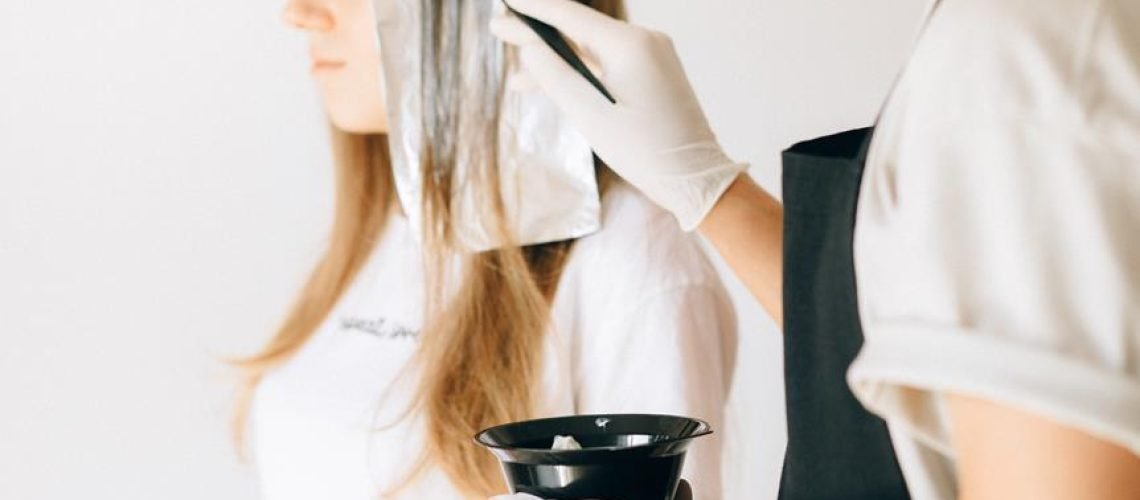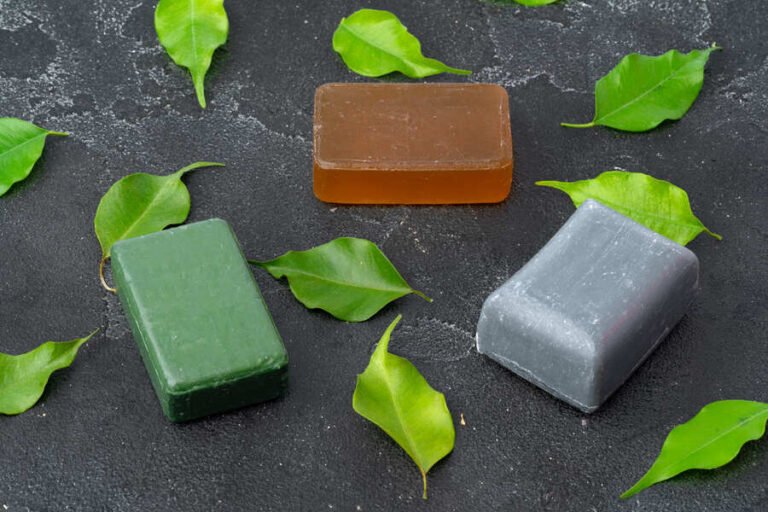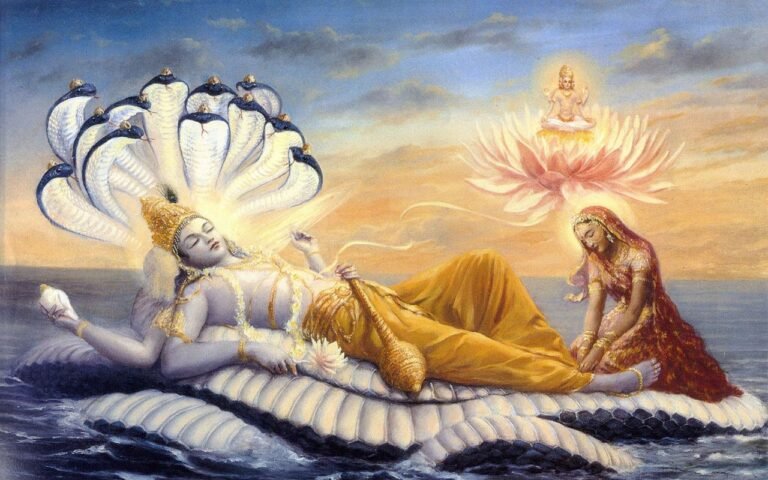Did you know that the processing time of hair dye directly affects the color intensity and longevity of your desired shade? Achieving vibrant and long-lasting results requires proper knowledge and care.
In this article, we will explore how long to leave hair dye in and provide essential care tips for maintaining your color's vibrancy. Whether you're looking to express your personal style or enhance your appearance, following these guidelines will help you achieve your desired hair color and enjoy its beauty for an extended period.
Key Takeaways
- Deep condition hair before and after dyeing
- Avoid washing hair immediately after dyeing
- Use color-safe and gentle hair care products
- Limit heat styling to prevent color fading
Understanding Different Hair Dye Types and Processing Times
The article provides an in-depth understanding of the different hair dye types and their corresponding processing times.
When it comes to hair dye processing time, it is important to consider both the hair color and hair length. Different hair colors require varying processing times to achieve the desired results. For example, darker hair colors may need longer processing times compared to lighter shades.
Additionally, hair length also plays a role in the processing time. Shorter hair lengths generally require less time for the dye to process, while longer hair lengths may need more time for the color to fully develop.
It is essential to follow the instructions provided by the hair dye manufacturer to ensure optimal results and avoid any potential damage to the hair.
Factors That Influence Hair Dye Processing Time
Factors such as hair type, developer strength, dye formulation, coloring technique, and desired color intensity can significantly influence the processing time of hair dye.
Hair type and condition, including porosity, texture, and damage, can affect how quickly the dye is absorbed. The strength of the developer, which contains peroxide, can speed up or slow down the color processing. Different dye formulations and brands have varying processing speeds, so it is important to choose the best hair dye brands and formulations that suit your desired processing time.
The coloring technique used, such as applying heat, can also accelerate color absorption. Additionally, the desired color intensity plays a role, with subtle changes requiring shorter processing time and vibrant colors potentially needing longer processing time.
Recommended Processing Times for Different Hair Conditions
Processing times for different hair conditions can vary depending on factors such as hair type, damage level, and desired color intensity. Achieving vibrant and long-lasting color requires understanding the recommended processing times for different hair types. Here are some tips to help you achieve the best results:
- Resistant Gray Hair: Allow 45-60 minutes for the dye to penetrate and cover stubborn gray strands.
- Touching-Up Roots: Apply the dye for 20-30 minutes to refresh the color at the roots.
- Fashion Colors or Pastel Shades: For these bold shades, leave the dye on for 30 minutes to several hours, depending on the desired intensity.
- Damaged or Porous Hair: Process the dye for 20-30 minutes to avoid further damage to already fragile hair.
Preparing Your Hair for Dyeing: Hair Dyeing Care Tips
Before applying hair dye, it is important to properly prepare your hair to ensure optimal color results and minimize damage. Pre-dye hair preparation plays a crucial role in achieving vibrant and long-lasting color.
To prepare your hair, start by deep conditioning it to nourish and strengthen the strands. This will help protect your hair from potential damage caused by the dyeing process.
Additionally, avoid washing your hair immediately before dyeing, as this can strip away natural oils that provide a protective barrier. When choosing hair care products, opt for color-safe and gentle formulas to prevent color fading.
Limit heat styling, as excessive heat can cause color to fade quickly. Lastly, protect your hair from UV rays by wearing hats or using hair products with built-in UV protection.
Overcoming Common Dyeing Challenges
One common challenge when dyeing hair is achieving even color application throughout the hair strands. This can be addressed by following these color correction techniques:
- Meticulous application: Ensure that the hair dye is evenly distributed from root to tip, making sure to saturate each strand for consistent color.
- Adjust intensity: If the color appears too dark or intense, mix the dye with conditioner to dilute it. Conversely, use a clarifying shampoo to lighten the color if it appears too light.
- Special formulations: Opt for hair dyes specifically formulated for gray hair, as they often require longer processing time to achieve desired results.
- Consulting professionals: If you're changing hair color over previous dye or highlights, consider seeking the expertise of a professional colorist or using a color remover to avoid unwanted color clashes.
To prevent hair dye fading, follow these post-dyeing care tips:
- Use color-safe hair products and avoid washing hair immediately after dyeing.
- Limit heat styling and protect hair from UV rays.
- Wash with cool water, limit washing frequency, and protect hair from chlorine and saltwater.
- Deep condition regularly and refresh color with glosses or glazes.
Post-Dyeing Care Tips for Vibrant and Long-Lasting Color
To maintain vibrant and long-lasting color, it is essential to follow proper post-dyeing care tips. Preventing color fading and maintaining longevity are key factors in keeping your hair color looking fresh and vibrant.
One important step in post-dyeing care is deep conditioning. This helps to nourish the hair and keep it moisturized, preventing dryness and color fading.
It is also important to protect your hair from environmental factors that can cause damage and color fading. UV rays from the sun can be particularly damaging, so wearing hats or using hair products with UV protection is recommended.
Additionally, using color-safe hair care products and avoiding excessive heat styling can help maintain the vibrancy and longevity of your hair color.
Achieving Even Color Application: Techniques and Tips
The key to achieving even color application lies in employing effective techniques and implementing helpful tips. Here are some techniques and tips to prevent uneven color distribution during hair dye application:
- Sectioning: Divide your hair into manageable sections using hair clips or bands. This ensures that the dye is evenly applied to all areas of your hair.
- Comb through: Use a wide-toothed comb to distribute the dye evenly from roots to ends. This helps to avoid patchy or streaky color.
- Timing: Follow the recommended processing time for your chosen hair dye. Leaving the dye on for too long or too short can result in uneven color.
- Mixing: Ensure that you mix the hair dye thoroughly before application. This helps to achieve consistent color throughout.
Adjusting Color Intensity: Mixing and Clarifying Methods
Color intensity can be adjusted using various mixing and clarifying methods to achieve the desired shade and level of vibrancy.
One method to adjust color intensity is by mixing dye with conditioner. This allows for a more diluted application, resulting in a softer and less intense color. Simply mix a small amount of dye with a generous amount of conditioner and apply it to your hair. This technique is especially useful for achieving pastel shades or toning down vibrant colors.
Another method is using clarifying shampoo. Clarifying shampoos are designed to remove product buildup and can help fade hair dye. By using a clarifying shampoo regularly, you can gradually lighten the color and reduce its intensity. However, it's important to note that clarifying shampoos can also strip the hair of natural oils, so be sure to follow up with a moisturizing conditioner.
Special Considerations for Gray Hair: Extending Processing Time and Suitable Dye Options
When dyeing gray hair, it is important to consider extending the processing time and selecting suitable dye options. Gray hair can be resistant to color, so allowing the dye to process for a longer period can help achieve better coverage. Additionally, choosing the right dye for gray hair is crucial in obtaining desirable results.
Here are some special considerations for gray hair:
- Extending Processing Time: Gray hair often requires longer processing time compared to other hair types. It is recommended to leave the dye on for 45-60 minutes to ensure maximum coverage.
- Choosing the Right Dye: Opt for permanent or demi-permanent hair dyes that contain oxidative agents. These dyes penetrate the hair shaft effectively and provide longer-lasting color.
- Gray Coverage Formulas: Look for hair dyes specifically formulated for gray coverage. These dyes often have higher levels of pigment to effectively color gray strands.
- Professional Advice: If you're unsure about the best dye options for gray hair, consult a professional colorist who can recommend suitable products and techniques.
Frequently Asked Questions
Can I Leave Hair Dye in Overnight for Better Results?
Leaving hair dye in overnight may have risks, such as scalp irritation or damage. However, it can also provide more intense color results. It is important to consider hair type, dye formulation, and desired color intensity before deciding on the duration of leaving dye in.
How Often Should I Touch up My Roots?
For optimal hair color maintenance, it is recommended to touch up roots every 4-6 weeks. To maintain the vibrancy of the color, deep condition regularly, limit heat styling, use color-safe products, and protect hair from UV rays.
Can I Use Regular Shampoo and Conditioner After Dyeing My Hair?
After dyeing your hair, it is recommended to use color-safe products to maintain vibrancy. Alternatives to regular shampoo and conditioner for dyed hair include sulfate-free options and products specifically designed for color-treated hair.
How Can I Minimize Damage to My Hair When Dyeing?
To minimize damage when dyeing your hair, take precautions such as deep conditioning before and after dyeing, using color-safe and gentle hair care products, limiting heat styling, and protecting hair from UV rays.
Is It Safe to Dye My Hair While Pregnant or Breastfeeding?
Hair dyeing precautions during pregnancy include minimizing exposure to chemicals, opting for natural or ammonia-free dyes, ensuring proper ventilation, and consulting with a healthcare professional. The potential risks of hair dye during breastfeeding are minimal, but caution is advised.
Conclusion
In conclusion, determining the appropriate processing time for hair dyeing is crucial to achieve vibrant and long-lasting results.
Factors such as hair type, dye type, and desired color intensity all play a role in determining the ideal duration.
By following recommended processing times and taking proper care of the hair before and after dyeing, individuals can maintain the color's vibrancy and health.
Remember, achieving the perfect hair color is like creating a beautiful work of art – it requires precision, knowledge, and care.







